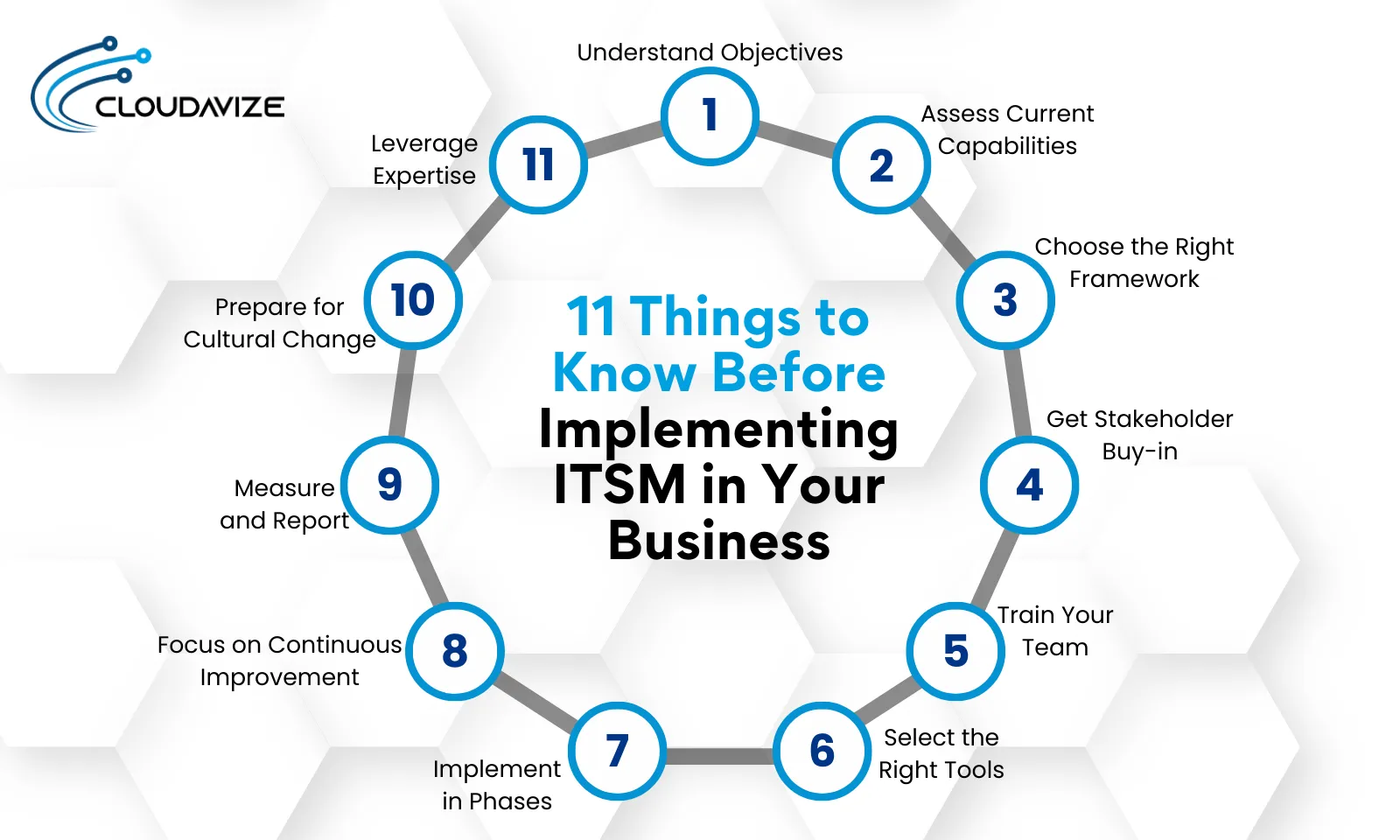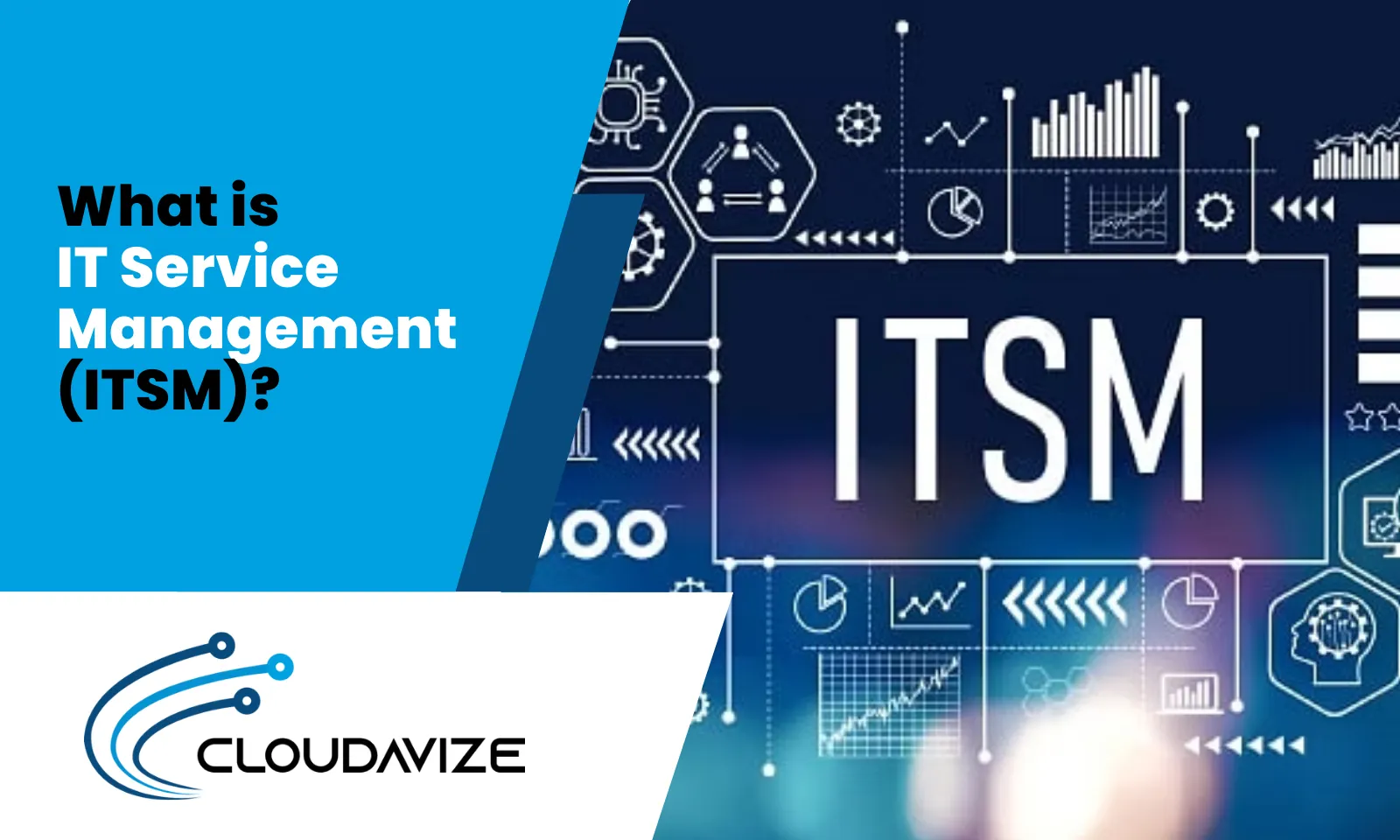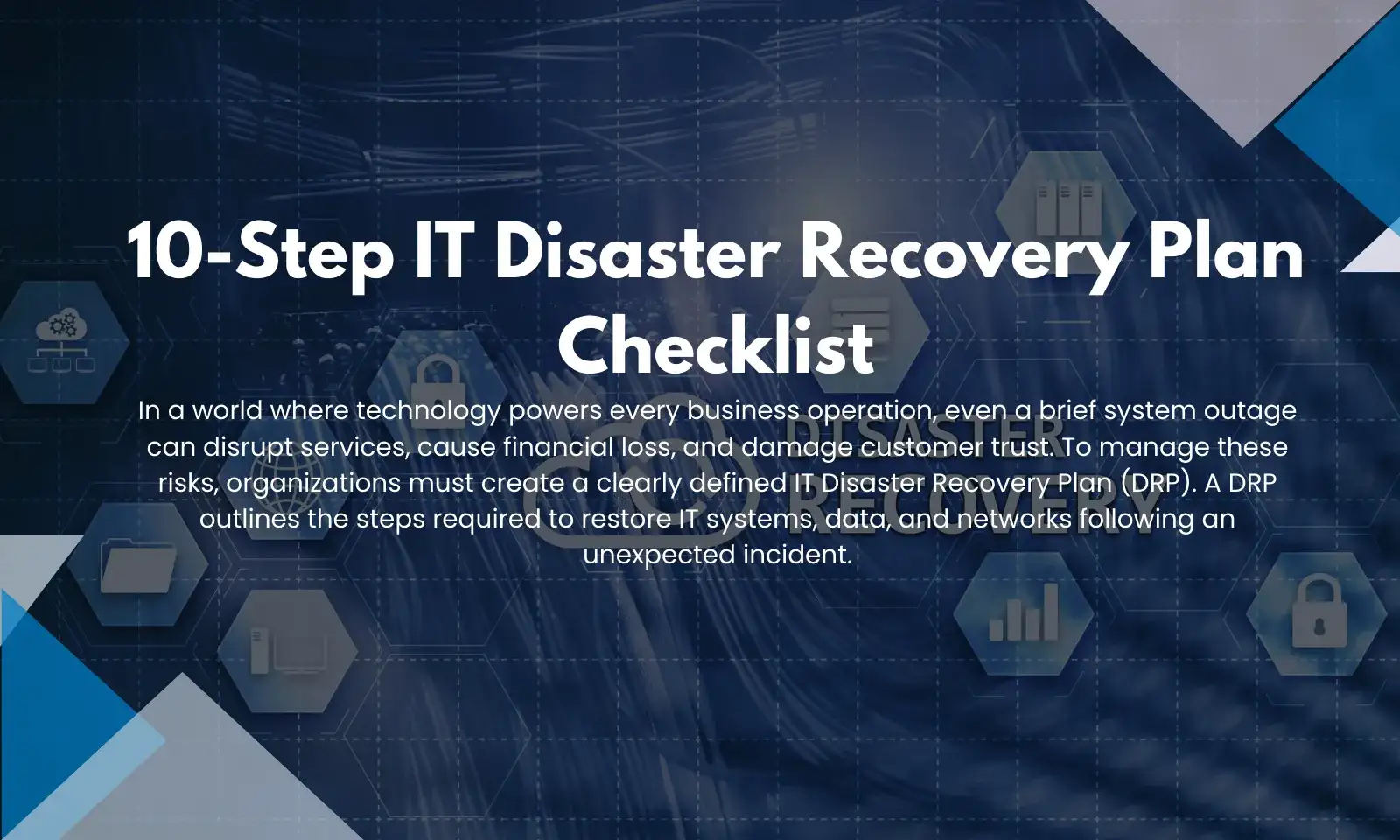IT Service Management (ITSM) is a structured approach to delivering IT services that align with business objectives, ensuring efficiency, reliability, and scalability. Frameworks like ITIL, COBIT, and ISO/IEC 20000 provide valuable guidance but can be complex to implement effectively. Managed Service Providers (MSPs) address this challenge by offering specialized expertise in optimizing IT operations.
Outsourcing ITSM to an MSP allows businesses to delegate critical tasks such as incident resolution, change implementation, and service-level monitoring. Using advanced tools like Jira Service Management and SysAid, MSPs provide customized solutions to meet unique organizational needs, streamlining processes and minimizing downtime.
With MSPs managing ITSM, organizations experience reduced operational costs, improved service quality through proactive support, and simplified IT system management. This partnership ensures optimized IT services, empowering businesses to focus on innovation and growth. The following sections delve into the role of MSPs in ITSM, their benefits, and the tools and frameworks that make them integral to modern business success.
Table of Contents
Why is ITSM Important?
IT Service Management (ITSM) is crucial for aligning IT services with business goals, ensuring efficient operations, superior service quality, and enabling digital transformation. Specialized expertise is often required to achieve these outcomes, making Managed Service Providers (MSPs) a strategic choice for many organizations.
MSPs enhance ITSM by addressing critical tasks such as incident resolution and service-level management with advanced tools like ConnectWise Manage and Jira Service Management. Their dedicated teams ensure rapid response times and consistent service quality, reducing the need for extensive in-house resources.
In addition, MSPs accelerate digital transformation by seamlessly implementing new technologies, such as cloud-based ITSM frameworks. This approach enhances agility and scalability while minimizing risks. By aligning IT strategies with broader business objectives and leveraging performance metrics to refine processes, MSPs enable organizations to prioritize growth while maintaining optimal IT operations.
What Is an ITSM Framework?
An ITSM framework is a structured set of methodologies and best practices for managing IT services effectively. Frameworks like ITIL, COBIT, and ISO/IEC 20000 offers comprehensive guidelines to improve efficiency, enhance service delivery, and meet business objectives. However, implementing these frameworks can be complex, which is where MSPs prove invaluable.
MSPs specialize in tailoring frameworks to a client’s unique needs. They evaluate operational requirements, industry standards, and scalability goals to ensure seamless integration. Whether adopting ITIL for service lifecycle management, COBIT for governance, or ISO/IEC 20000 for compliance, MSPs handle every detail, from deployment to continuous optimization.
Proactive management by MSPs ensures that ITSM processes evolve with changing business demands. For instance, ITIL workflows can be standardized and customized for specific industries, while ISO/IEC 20000 standards enhance efficiency and regulatory compliance. This expert management allows organizations to remain confident that their IT services are reliable, streamlined, and aligned with strategic goals.
Examples of Popular Frameworks for ITSM
Several ITSM frameworks Like ITIL, COBIT, ISO/IEC 20000, DEvOpps, LeanIt, and Six Sigma provide structured methodologies to enhance efficiency, improve service delivery, and align IT with business objectives. Each caters to specific needs and operational challenges:
- ITIL (Information Technology Infrastructure Library):
ITIL manages the IT service lifecycle, from strategy to continual improvement, ensuring adaptability to changing business needs while maintaining service quality. For instance, ITIL practices streamline incident management, reducing downtime and enhancing user satisfaction. - COBIT (Control Objectives for Information and Related Technologies):
COBIT focuses on governance, ensuring IT aligns with business goals while meeting compliance standards. Financial institutions often use COBIT to meet regulations like GDPR and PCI DSS while maintaining operational efficiency. - ISO/IEC 20000:
The first international standard for ITSM, ISO/IEC 20000, ensures consistent service delivery through certified processes. This framework builds customer trust and drives compliance, ideal for industries like global logistics standardizing service quality across regions. - DevOps:
DevOps fosters collaboration between development and operations teams, leveraging agile methodologies for faster software delivery and improved reliability. For example, a software company might use DevOps to implement continuous integration pipelines, ensuring rapid feature deployment. - Lean IT:
Inspired by lean manufacturing, Lean IT eliminates waste in IT processes to maximize value. A manufacturing firm, for instance, might optimize its IT supply chain management using Lean IT to enhance efficiency and reduce redundancies. - Six Sigma:
Six Sigma applies data-driven strategies to improve process consistency and eliminate errors. Six Sigma can refine IT support processes in healthcare, ensuring uptime for critical systems like electronic health records (EHRs).
Managed Service Providers (MSPs) simplify framework selection and implementation. By evaluating operational needs, MSPs tailor frameworks like ITIL, COBIT, and ISO/IEC 20000 to meet client goals. This expert handling ensures streamlined IT services, reduced downtime, and optimized outcomes, enabling businesses to focus on innovation and growth.
What Are the Benefits of ITSM?
IT Service Management (ITSM) delivers several benefits, such as streamlining IT processes, enhancing service quality, and aligning IT operations with business objectives. While these outcomes are transformative, achieving them often demands significant expertise and resources. Partnering with a Managed Service Provider (MSP) enables businesses to fully leverage ITSM benefits without the challenges of managing it internally.
Top 10 benefits of IT Service Management (ITSM) include:
- Improved Service Quality: Ensures consistent, reliable, and efficient IT services.
- Cost Efficiency: Reduces operational expenses through optimized processes and resource utilization.
- Enhanced Productivity: Automates repetitive tasks, freeing resources for strategic initiatives.
- Faster Issue Resolution: Provides structured processes for incident and problem management.
- Alignment with Business Goals: Aligns IT services with organizational objectives for better outcomes.
- Regulatory Compliance: Helps meet industry standards and legal requirements.
- Improved User Experience: Delivers accessible and transparent IT services with minimal disruptions.
- Scalability and Agility: Adapts to changing business needs and supports growth.
- Data-Driven Insights: Enables continuous improvement through performance metrics and analysis.
- Stronger Security: Enhances data protection and risk management.
Top ITSM Software and Tools for Your Business
Efficient IT Service Management (ITSM) relies on advanced tools to streamline processes, improve service delivery, and enhance operations. These tools address functions such as incident management, asset tracking, workflow automation, and service-level management.
- Jira Service Management: Renowned for its robust incident, problem, and change management features, Jira facilitates efficient workflows and automates processes, accelerating issue resolution and enhancing service delivery.
- ConnectWise Manage: A comprehensive platform centralizing IT service management, ConnectWise excels in resource planning, ticket management, and SLA tracking, ensuring seamless operations.
- ServiceNow: This scalable solution offers extensive automation features, service-level management, and performance monitoring, with customizable modules suitable for businesses of all sizes.
- SysAid: With built-in asset management and intuitive service request handling, SysAid provides robust reporting tools for tracking and analyzing IT service performance.
- ManageEngine ServiceDesk Plus: Combining ITSM, IT asset management, and project management functionalities, this tool optimizes resource utilization and integrates processes for greater efficiency.
What is the Process of IT Service Management?
ITSM involves interconnected functions designed to ensure efficient and reliable IT services. Partnering with an MSP simplifies this complex process, allowing businesses to concentrate on their core activities. Below are eight key ITSM processes:
- Incident Management: MSPs detect and resolve disruptions proactively using advanced monitoring tools, minimizing downtime and maintaining operational continuity.
- Problem Management: By identifying root causes and implementing long-term solutions, MSPs reduce recurring incidents and enhance system stability.
- Change and Release Management: MSPs plan, approve, and execute IT changes, balancing agility with minimal disruption during updates, deployments, and upgrades.
- Service Request Management: With automated workflows and self-service portals, MSPs ensure user requests—such as access provisioning or troubleshooting—are addressed promptly.
- Service-Level Management: MSPs monitor and uphold SLAs, ensuring performance meets benchmarks while identifying opportunities for improvement.
- Knowledge Management: By maintaining a centralized knowledge base, MSPs enable quick resolutions for common issues, empowering users and IT staff.
- Configuration Management: MSPs maintain accurate inventories of IT assets and configurations, ensuring compliance with industry standards and optimal performance.
- IT Service Desk Management: As a single point of contact, MSPs handle tickets, updates, and user support, enhancing user experience and reducing downtime.
11 Things to Know Before Implementing ITSM in Your Business
Implementing IT Service Management (ITSM) can be complex, but partnering with a Managed Service Provider (MSP) simplifies the process, ensuring a smooth transition and measurable results. Here are 11 key considerations:

- Defining Objectives: MSPs collaborate with stakeholders to establish clear, measurable goals that align with business needs.
- Assessing Current Capabilities: A comprehensive analysis of your IT infrastructure identifies gaps and ensures seamless integration of the new framework.
- Choosing the Right Framework: MSPs select and customize frameworks like ITIL or COBIT based on organizational needs, streamlining decision-making.
- Securing Stakeholder Buy-In: MSPs communicate the value of ITSM to ensure organizational support and alignment.
- Training Your Team: Comprehensive training equips staff with the skills to operate effectively within the ITSM framework.
- Selecting the Right Tools: MSPs evaluate and deploy tools like Jira Service Management or ServiceNow, ensuring seamless operations.
- Phased Implementation: Breaking implementation into manageable phases minimizes disruption and ensures smoother adoption.
- Continuous Improvement: MSPs monitor ITSM processes and refine them based on performance data and evolving business needs.
- Measuring and Reporting: By tracking KPIs, MSPs provide actionable insights for performance improvement.
- Managing Cultural Change: MSPs foster a service-oriented mindset through education and ongoing communication.
- Leveraging Expertise: With in-depth knowledge, MSPs mitigate risks and deliver results like reduced downtime and improved service quality.
Best ITSM Practices for Better Efficiency of Your Business
Adopting ITSM best practices drives efficiency and reliability. Partnering with an MSP ensures these practices are applied seamlessly:
- Service-Oriented Mindset: MSPs align IT services with business goals, tailoring solutions to deliver maximum value.
- Continuous Improvement: Proactive monitoring and updates align IT operations with technological and business changes.
- Process Automation: Tools like Jira Service Management automate tasks, reducing errors and improving productivity.
- Knowledge Management: MSPs maintain centralized knowledge bases for quicker issue resolution and reduced duplication of efforts.
- Robust IT Service Desk: A fully managed service desk ensures timely resolutions and high user satisfaction.
- Prioritizing Security: Integrated security measures protect against threats and ensure compliance with regulations like GDPR and HIPAA.
- Aligning with Business Goals: MSPs regularly review ITSM initiatives to ensure they support strategic objectives.
- User-Centric Design: MSPs create intuitive processes and self-service portals, enhancing the user experience.
- Driving Digital Transformation: MSPs accelerate cloud migrations and technology adoption with minimal disruption. continuous improvement, and prepare for cultural changes.



